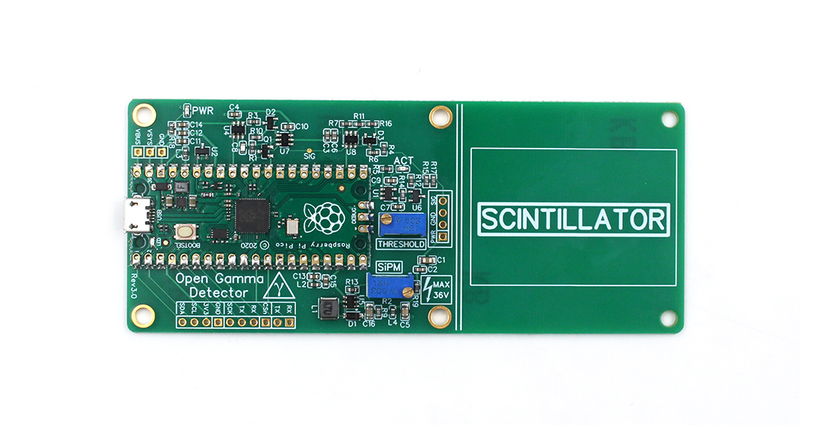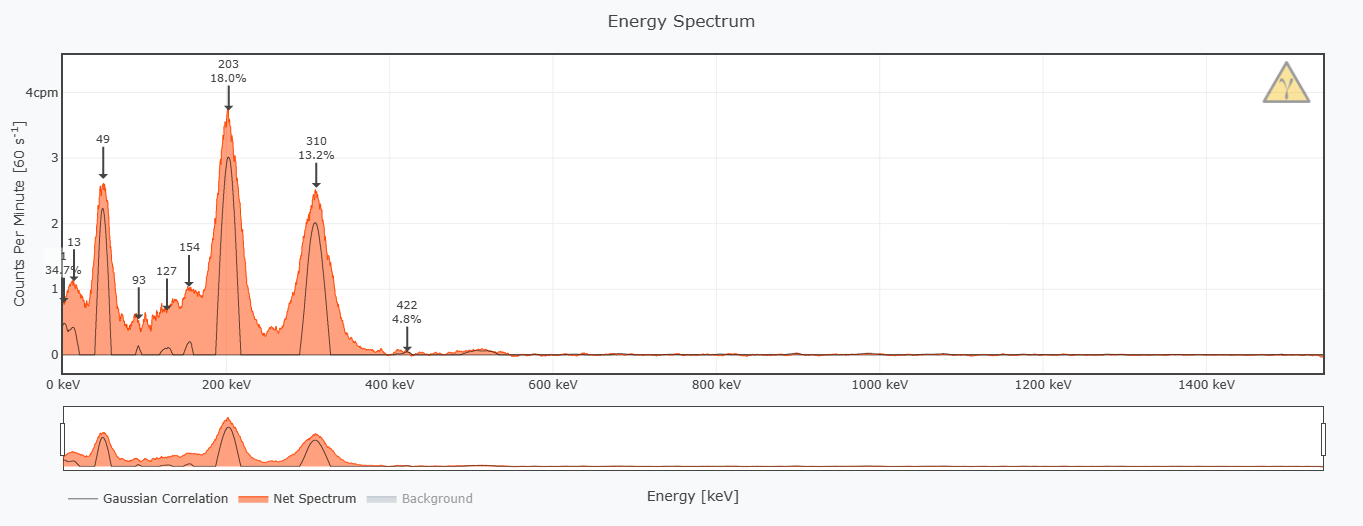Finally, the newest hardware revision of the Open Gamma Detector is ready! All the testing and most of the work is done now, so here you have it. I'm so excited to share all the things that I improved with you.

Long story short, here is the (complete) list of changes between 3.0 and 2.x:
- Got rid of the extra SiPM PSU pot.
- Removed the gain pot, it's fixed now which greatly helps with getting it to run in the first place. If you're using a crystal size that fits well on the PCB scintillator area (i.e. not larger than the PCB, but not tiny either), you shouldn't need to change any gain parameters anyways. However, if you really want to change it, there is documentation on how to do it.
- Turning any pot on the board clockwise will always increase the parameter, anti-clockwise decreases.
- Voltage reference for the Pico ADC is now soldered by default.
- Switch to 0603 components for a much improved PCB layout and better performance. Don't worry, future revisions won't get smaller than that and it's still fairly solderable by hand.
- Slightly larger SiPM output voltage range.
- Slightly larger energy range due to optimized diode selection for the peak and hold circuit.
- More optional pin headers for SPI, I2C and even UART.
- Ability to subtract the average baseline voltage, i.e. the DC bias on each signal peak akin to something like hardware AC coupling.
- Voltage reference for the threshold comparator voltage for even less drift.
- More power filtering in general.
- The threshold triggers now directly on the signal instead of the peak and hold circuit, which makes it much more reliable.
- The forward four screw mounts are now connected to the circuit GND if you want to shield your detector board.
- Added a dim-but-visible power LED.
- Removed the extra cable tie holes. These were way too small anyways in my experience and you don't really need them.
- Much improved silk screen design in my opinion.
- Optimized component values (e.g. all voltage dividers) for power usage.
- Added input protection diodes.
- Cleaned up the software with some hard-to-understand settings removed.
- Much improved documentation on GitHub with cleaner READMEs and more Q&A.
It's really hard to remember and write down all the changes that I did in the last couple of months, so if I forgot something, I'll add it to the list, don't worry! ;-)
As you can see the focus really has been on the versatility, ease-of-use and also on the performance (energy resolution) and I think these changes all speak for themselves. It's a large step forward in the right direction, without having to increase the total parts cost much at all, even in the current time.
Here is a really quick spectrum to give you an idea on the improved energy resolution, although I have posted it a couple times now already:

As always, fully assembled boards will be available on my Tindie store (linked on the project page or on GitHub), as well as the Makerfabs store. I had to increase the price by USD 5 unfortunately, that mostly goes to covering all the fees on Tindie and PayPal and a small fraction also goes to a slightly higher production cost.
You are as always encouraged to build a device on your own, remix the design or whatever you can think of! Buying assembled boards from my store saves you some time soldering all the parts and at the same time you support me with the purchase, I really appreciate it!
In addition to this, I will be releasing the newest revision of the Mini SiD with much improved performance there as well in the next couple of days, stay tuned and have a nice day!
 NuclearPhoenix
NuclearPhoenix
Discussions
Become a Hackaday.io Member
Create an account to leave a comment. Already have an account? Log In.